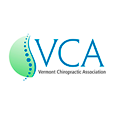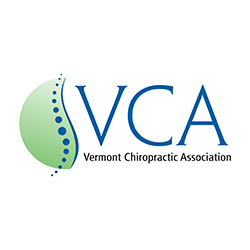Numerous studies have shown that chiropractic treatment is both safe and effective. The following are excerpts from a few of the more recent studies. By examining the research supporting chiropractic care, you will find that chiropractic offers tremendous potential in meeting today’s health care challenges.
Safety of Chiropractic, by the ACA
Chiropractic Research and Practice: State of the Art, by Daniel Redwood, DC.
Since chiropractic’s breakthrough decade in the 1970s when the U.S. federal government included chiropractic services in Medicare and federal workers’ compensation coverage, approved the Council on Chiropractic Education (CCE) as the accrediting body for chiropractic colleges, and sponsored a National Institutes of Health (NIH) conference on the research status of spinal manipulation – the profession has grown and matured into an essential part of the nation’s healthcare system…Click Here to read the full text.
For Acute and Chronic Pain
“Patients with chronic low-back pain treated by chiropractors showed greater improvement and satisfaction at one month than patients treated by family physicians. Satisfaction scores were higher for chiropractic patients. A higher proportion of chiropractic patients (56 percent vs. 13 percent) reported that their low-back pain was better or much better, whereas nearly one-third of medical patients reported their low-back pain was worse or much worse.”
– Nyiendo et al (2000), Journal of Manipulative and Physiological Therapeutics
In a Randomized controlled trial, 183 patients with neck pain were randomly allocated to manual therapy (spinal mobilization), physiotherapy (mainly exercise) or general practitioner care (counseling, education and drugs) in a 52-week study. The clinical outcomes measures showed that manual therapy resulted in faster recovery than physiotherapy and general practitioner care. Moreover, total costs of the manual therapy-treated patients were about one-third of the costs of physiotherapy or general practitioner care.
— Korthals-de Bos et al (2003), Britisnt Alternatives
“Acute and chronic chiropractic patients experienced better outcomes in pain, functional disability, and patient satisfaction; clinically important differences in pain and disability improvement were found for chronic patients.”
– Haas et al (2005), Journal of Manipulative and Physiological Therapeutics
“In our randomized, controlled trial, we compared the effectiveness of manual therapy, physical therapy, and continued care by a general practitioner in patients with nonspecific neck pain. The success rate at seven weeks was twice as high for the manual therapy group (68.3 percent) as for the continued care group (general practitioner). Manual therapy scored better than physical therapy on all outcome measures. Patients receiving manual therapy had fewer absences from work than patients receiving physical therapy or continued care, and manual therapy and physical therapy each resulted in statistically significant less analgesic use than continued care.”
– Hoving et al (2002), Annals of Internal Medicine
For Headaches
“Cervical spine manipulation was associated with significant improvement in headache outcomes in trials involving patients with neck pain and/or neck dysfunction and headache.”
— Duke Evidence Report, McCrory, Penzlen, Hasselblad, Gray (2001)
“The results of this study show that spinal manipulative therapy is an effective treatment for tension headaches. . . Four weeks after cessation of treatment . . . the patients who received spinal manipulative therapy experienced a sustained therapeutic benefit in all major outcomes in contrast to the patients that received amitriptyline therapy, who reverted to baseline values.” ‘
— Journal of Manipulative and Physiological Therapeutics, Boline et al. (1995)
Cost Effectiveness
“Chiropractic care appeared relatively cost-effective for the treatment of chronic low-back pain. Chiropractic and medical care performed comparably for acute patients. Practice-based clinical outcomes were consistent with systematic reviews of spinal manipulative efficacy: manipulation-based therapy is at least as good as and, in some cases, better than other therapeusis.”
– Haas et al (2005), Journal of Manipulative and Physiological Therapeutics
Patient Satisfaction
“Chiropractic patients were found to be more satisfied with their back care providers after four weeks of treatment than were medical patients. Results from observational studies suggested that back pain patients are more satisfied with chiropractic care than with medical care. Additionally, studies conclude that patients are more satisfied with chiropractic care than they were with physical therapy after six weeks.”
— Hertzman-Miller et al (2002), American Journal of Public Health
Popularity of Chiropractic
“Chiropractic is the largest, most regulated, and best recognized of the complementary and alternative medicine (CAM) professions. CAM patient surveys show that chiropractors are used more often than any other alternative provider group and patient satisfaction with chiropractic care is very high. There is steadily increasing patient use of chiropractic in the United States, which has tripled in the past two decades.”
– Meeker, Haldeman (2002), Annals of Internal Medicine
A study published in the February 2010 issue of The Spine Journal added additional evidence supporting the effectiveness of chiropractic spinal manipulation (smt) for cervicogenic headache (cgh). dr. mitch haas and his team at western states chiropractic college investigated the differences in dose (8 versus 16 treatments) and between high velocity low amplitude spinal manipulation versus light massage in the treatment of cervicogenic headache. Both interventions were provided by experienced chiropractors. There were multiple outcomes assessed and the SMT group had clinically significant improvement over the light massage control.
A Risk Assessment of Cervical Manipulation vs. NSAIDs for the Treatment of Neck Pain. Dabbs et al.
JMPT Vol. 18, number 8 Oct. 1995; 18:530-6.
Conclusions: “The best evidence indicates that cervical manipulation for neck pain is much safer than the use of NSAIDs, by as much as a factor of several hundred times. There is no evidence that indicates NSAID use is any more effective than cervical manipulation for neck pain.” Death rate for NSAID-associated GI problems at 0.04% per yr among OA patients receiving NSAIDs, or 3,200 deaths in the US per year. He (Brandt) also noted that there are several animal studies and human clinical studies that have actually implicated NSAIDs in the acceleration of joint destruction.
The Benefits Outweigh the Risks for Patients Undergoing Chiropractic Care for Neck Pain: A Prospective, Multicenter, Cohort Study J Manipulative Physiol Ther 2007 (Jul); 30 (6): 408–418
Conclusions: In contrast to clinical trials of prescription medication, researchers in the area of conservative care for musculoskeletal complaints have focused their attention on treatment effectiveness and, to a much lesser degree, on adverse events. This study, consisting of patients treated in a wide variety of chiropractic practices and settings, describes both positive and negative, and short- and long-term clinical outcomes for a relatively large study population with neck pain. Although many of the subjects (in this study) had chronic, recurrent neck pain and had undergone prior care for this complaint, many patients experienced benefit from the treatment (based upon diminished pain and disability, the percentage of patients recovered and percentage satisfied with care). Furthermore, many responded relatively quickly to treatment (48% were recovered at the fourth visit).
Immediate Effects on Neck Pain and Active Range of Motion After a Single Cervical High-velocity Low-amplitude Manipulation in Subjects Presenting with Mechanical Neck Pain: A Randomized Controlled Trial
J Manipulative Physiol Ther 2006 (Sep); 29 (7): 511–517
Conclusions: A group of 70 patients with neck pain (25 males and 45 females, ages 20-55 years) participated in this study. The lateral gliding test was used to establish an intervertebral joint dysfunction at the C3 through C4 or C4 through C5 levels. The subjects were randomly divided into either an experimental group, which received an HVLA thrust, or a control group, which received manual mobilization. Results suggest that a single cervical HVLA manipulation is more effective in reducing neck pain at rest, and in increasing active cervical range of motion, than a control mobilization procedure in subjects suffering from mechanical neck pain.
“Current Concepts in Spinal Manipulation and Cervical Arterial Incidents” © 2006
Conclusions: 2001 Terret. There was opined misuse of the literature by medical authors (page 105). Were the injuries actual caused by a chiropractic physician? In reality, actual injury was involved with medical practitioners, medical specialists, osteopaths, physiotherapists, naturopaths, the patient, a kung fu practitioner, a blind masseur, a wife, and a barber in India.
Death and Morbidity Rates of Common Medical Treatments: “Chiropractic procedures are the safest procedures in the provision of human health care services, when compared to know mortality and morbidity rates in medical practice.” (Current Concepts page 72) USA: 1: 2,000,000 neck manipulations Canada: 1:3,846,153 neck manipulations. Other sources: as low as 1:5,000,000
“In the 65-year period 1934 to 1999, there are only 37 cases of death known to have occurred in the world, from all types of SMT practitioners, with only 19 from that 65-year period being related to chiropractors or chiropractic manipulation (and some may have already had a stroke in evolution, and therefore had an identical outcome even if they had not consulted a DC.”
(Current Concepts page 72)
NOTE: compare above statistic to the fact that 16,500 people die annually from NSAID related complications. (see BMJ and JAMA 2000)
“The author has been unable to find any evidence-based clinical research to indicate beneficial effects of non-steroidal anti-inflammatory drugs (NSAIDs) in the treatment of cervical-spine pain syndromes; and yet NSAIDs are the most common prescribed first-line treatment by medical practitioners (about 5% of all prescriptions)”. (Current Concepts page 74)
Symptomatic Outcomes and Perceived Satisfaction Levels of Chiropractic Patients with a Primary Diagnosis Involving Acute Neck Pain J Manipulative Physiol Ther 2006 (May); 29 (4): 288–296
Conclusion: A total of 115 patients were contacted, of whom 94 became study participants, resulting in 60 women (64%) and 34 men. The mean age was 39.6 years (SD, 15.7). The mean number of visits was 24.5 (SD, 21.2). Pain levels improved significantly from a mean of 7.6 (median, 8.0) before treatment to 1.9 (median, 2.0) after treatment (P < .0001). The overall patient satisfaction rate was 94%.

